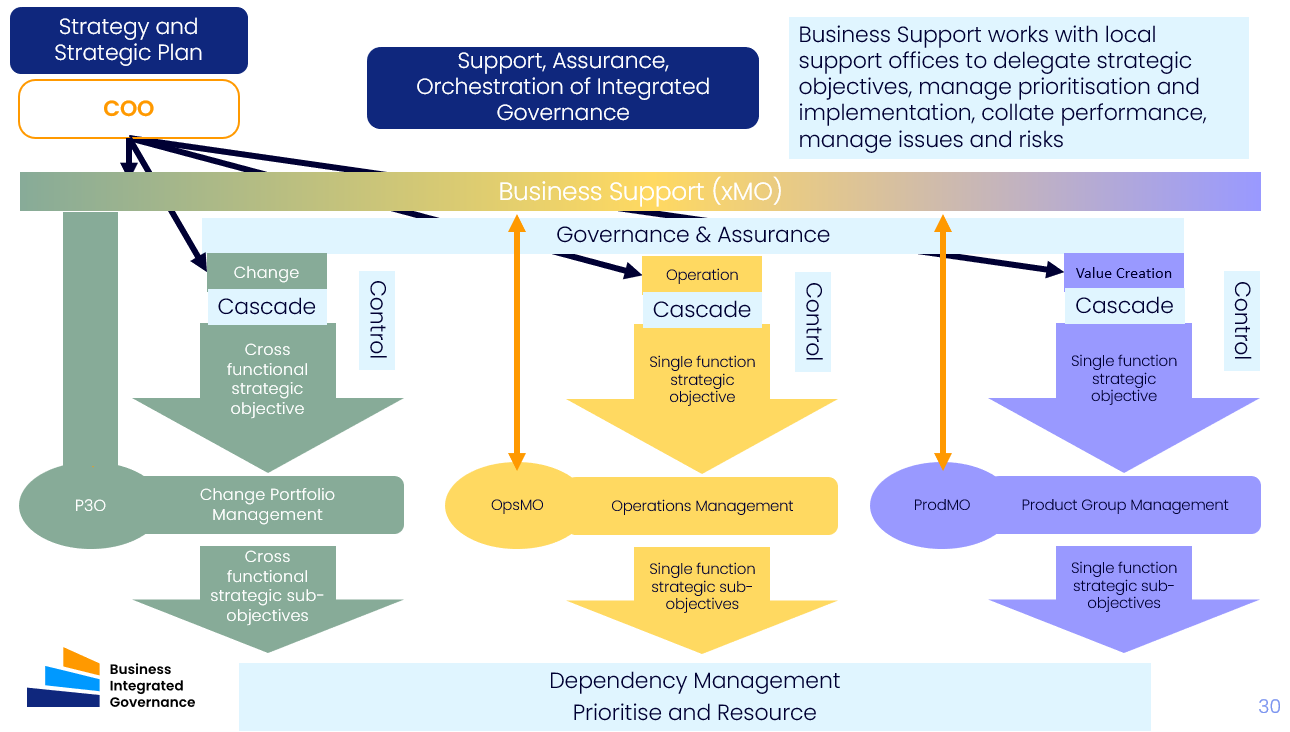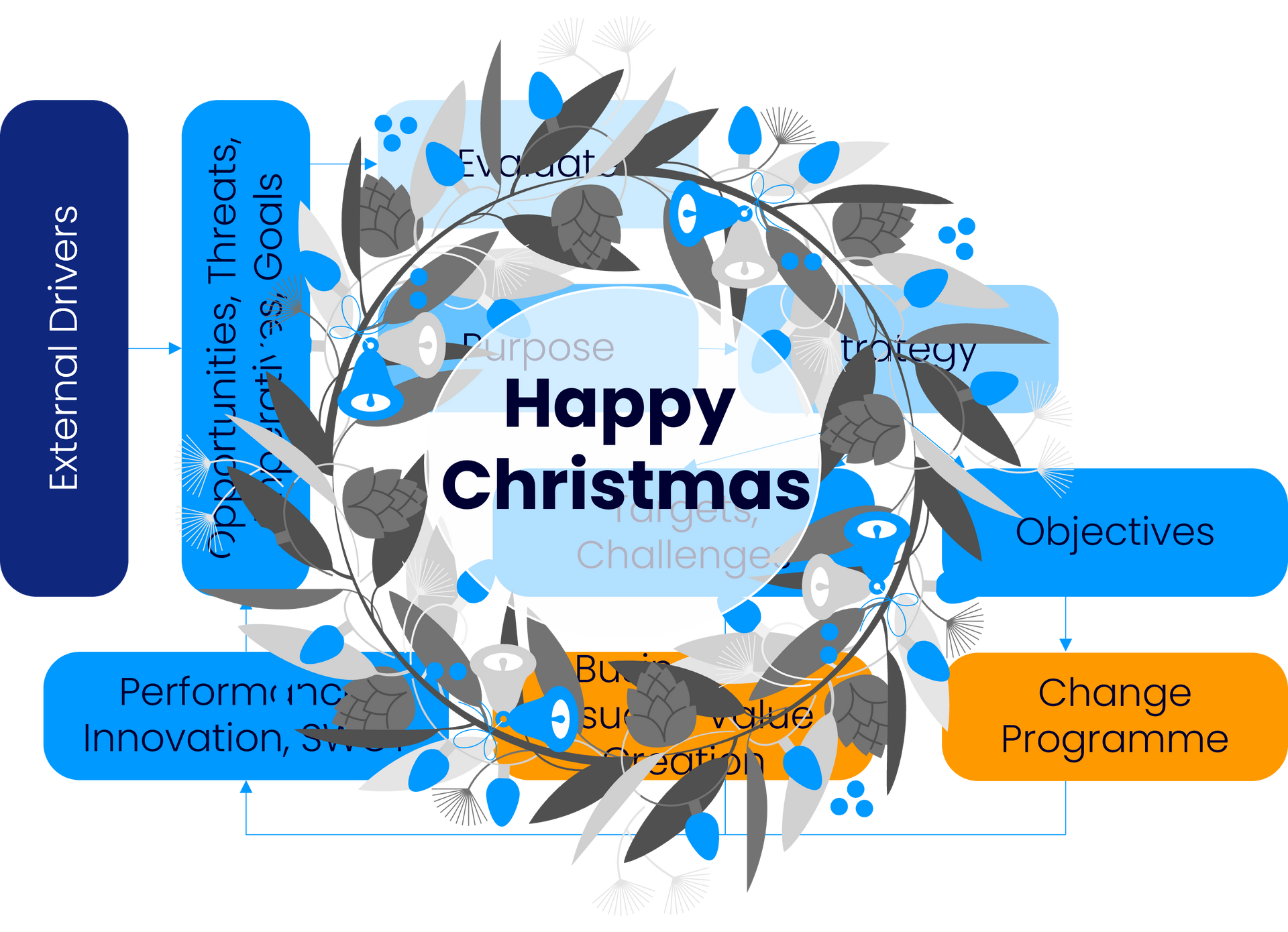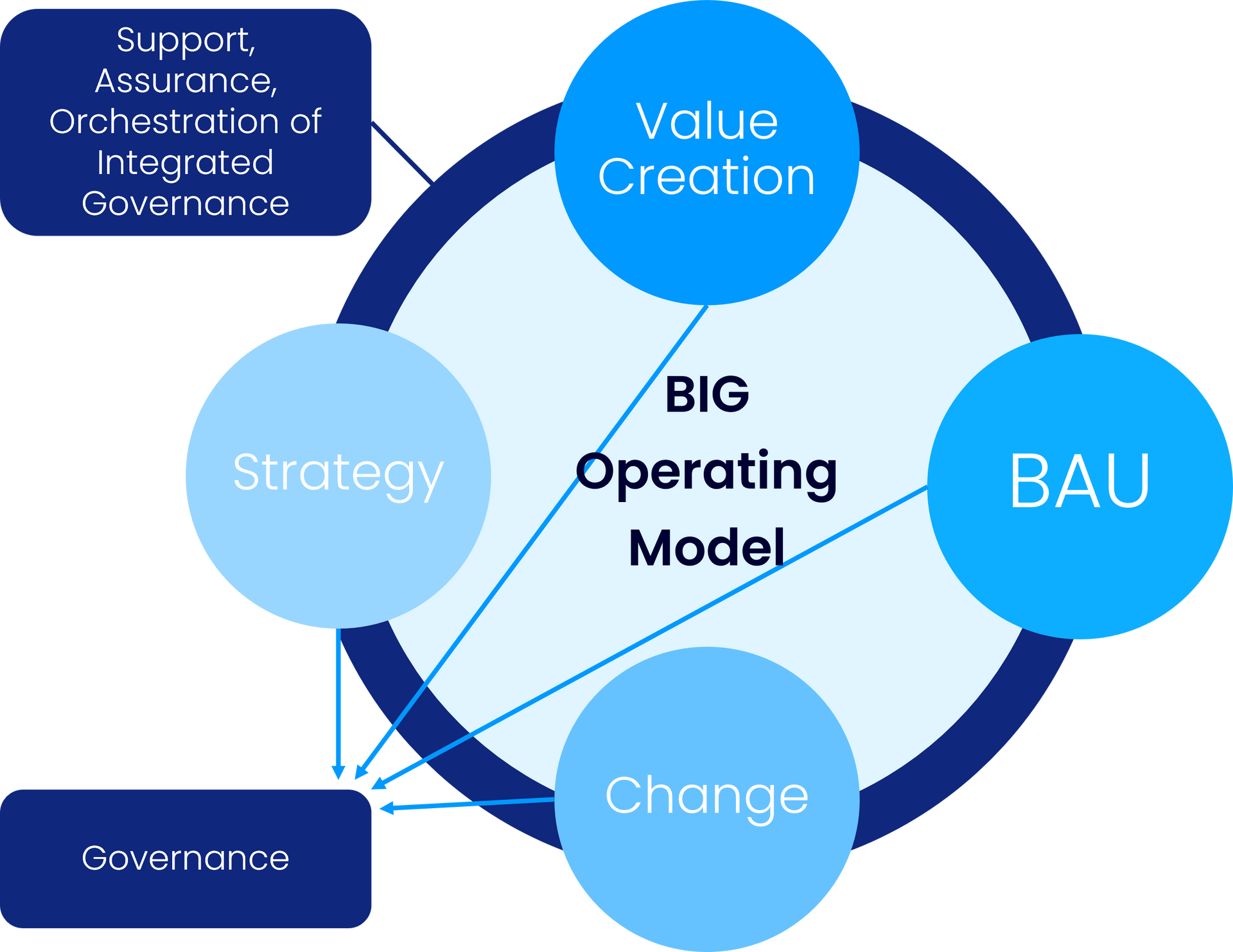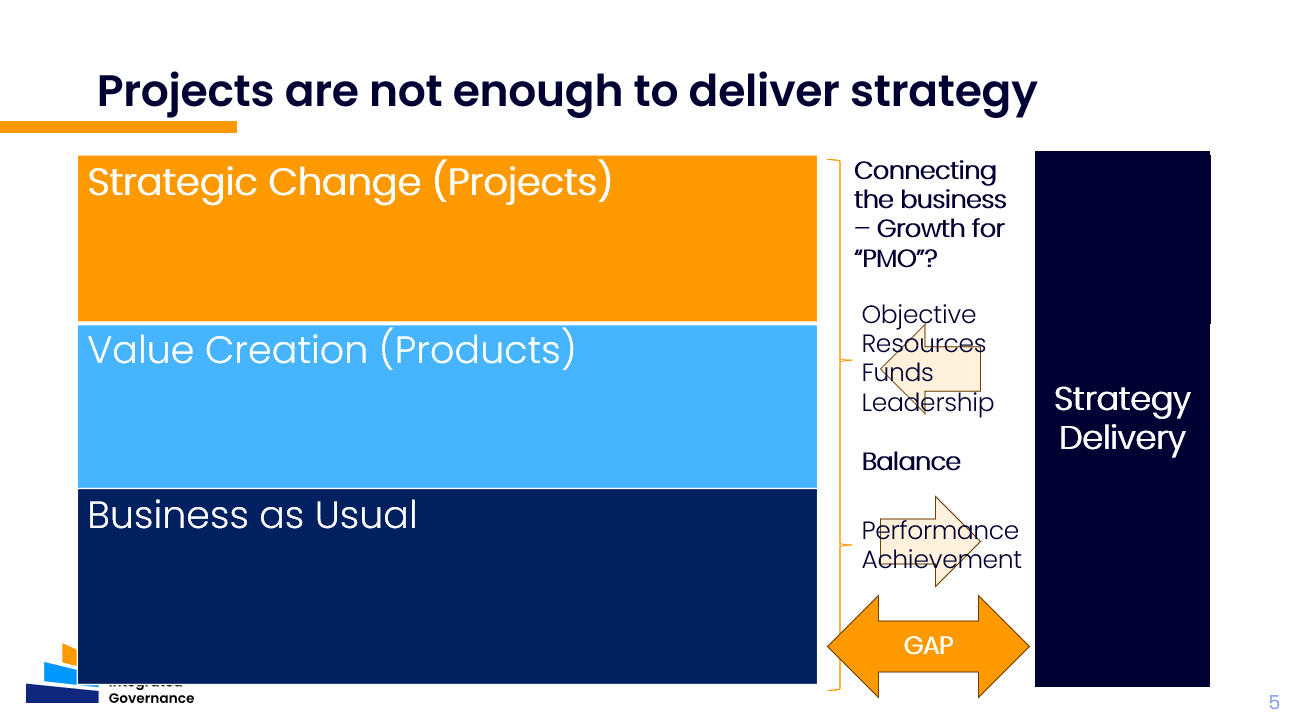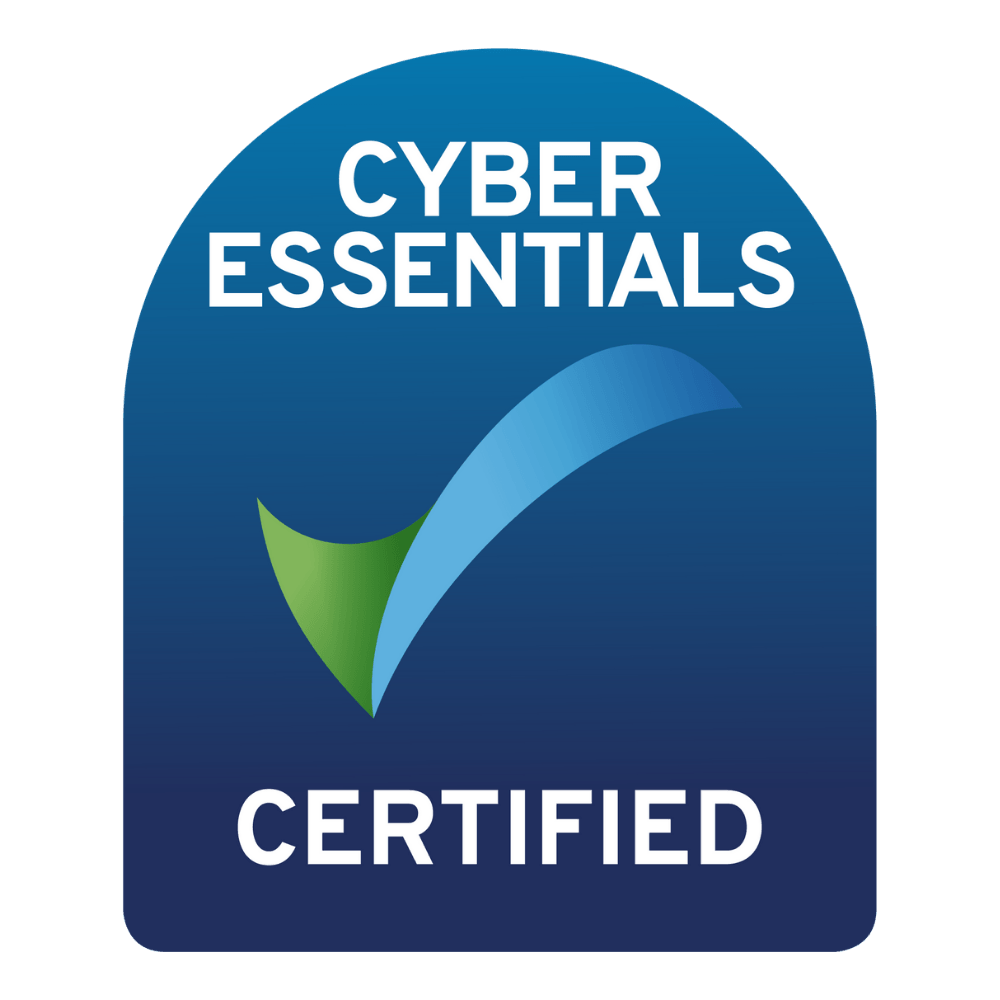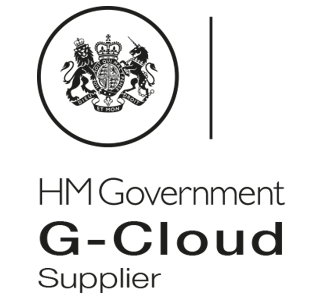Is your PMO a Cost Centre or a Value-Generator?
Introduction
On the 12th June, David Dunning and the Business Integrated Governance (BIG) CIC supported our friends at TransparentChoice to pose this challenge.
People attended this webinar to hear a discussion on whether a PMO (project management office) is a cost centre or a value-generator - to enable the start of a journey from mostly the former to more of the latter.
The main question is - can you move your service level past tactical support (operational effectiveness and efficiency) to more instrumentally supporting value generation (strategic delivery with agility) - perhaps by enabling the (often broken) connection from strategy to delivery to succeed more regularly.
The webinar was aimed at directors, managers, and heads of PMO or transformation who want to better justify their cost and add value to their organisation.
The speakers include Stuart Easton, one of the founders of Transparent Choice, a software company that helps PMOs with portfolio prioritization and optimization; David Dunning, the founder of Business Integrated Governance CIC, a community interest company that developed a framework for connecting purpose, vision, strategy and delivery; Alexander David, the CEO and founder of Value Matrix, a consultancy firm that helps PMOs with portfolio management and value realization; and Dan Dures, the head of product at Transparent Choice, who demonstrates some of the software features that support the webinar topics.
If you are a PMO lead that feels like they are
pushing on a rope - read on, forward this link to your Head of Transformation / COO - perhaps we can persuade them to
pull on the rope too...
Article prepared by:
David Dunning – lead author, Business Integrated Governance
Event Summary
The webinar is about how PMOs can transform from being cost centres to value generators by improving their governance and aligning their portfolios with the strategic objectives of the business.
David Dunning offers a broad vision for where a current and developed PMO could add value.
- The traditional role and challenges of PMOs: PMOs are often seen as the centre of excellence and support for project management, governance and compliance, but they may face scrutiny and pressure to justify their costs and value.
- The evolution and expansion of PMOs: PMOs may grow from supporting a single project or programme to overseeing a portfolio of projects aligned to business objectives, and then to integrating with business as usual and product creation functions.
- The value proposition and impact of PMOs: PMOs can provide greater value and business impact by focusing on objectives and key results within portfolios and beyond them - prioritising and deploying resources across different domains, and connecting from business purpose to vision to strategy.
Alexander David shares his experience of transforming a PMO at Direct Line, an insurance company, from a cost centre to a value driver. He explains how he created a case for change with the sponsorship and involvement of the senior leaders, and how he implemented a three-month sprint approach to deliver value quickly and gain trust. He also describes how he focused on improving the strategic portfolio management, the project and program execution, and the tool and data quality. He reports that the PMO transformation resulted in increased share prices, performance and productivity.
Anette Smith, a PMO manager at a manufacturing company, shares her journey of using Transparent Choice software to improve her portfolio prioritization and alignment with the business. She explains how she involved the business stakeholders in defining the value criteria and assessing the projects, and how she used the software to eliminate the cherry-picking and the squeaky wheel syndrome. She also mentions how she gained the executive sponsorship and support by showing the value that the PMO delivers to the business.
Dan Dures, the head of product at Transparent Choice, shows how the software supports the PMO value journey in three steps: organization, definition and optimization. He demonstrates how the software can help PMOs organize their projects in a Kanban board, define the value criteria and score the projects using a multi-criteria decision analysis method, and optimize the portfolio selection and sequencing using artificial intelligence and data visualization. He also shows how the software can generate a roadmap and a P&L projection based on the portfolio.
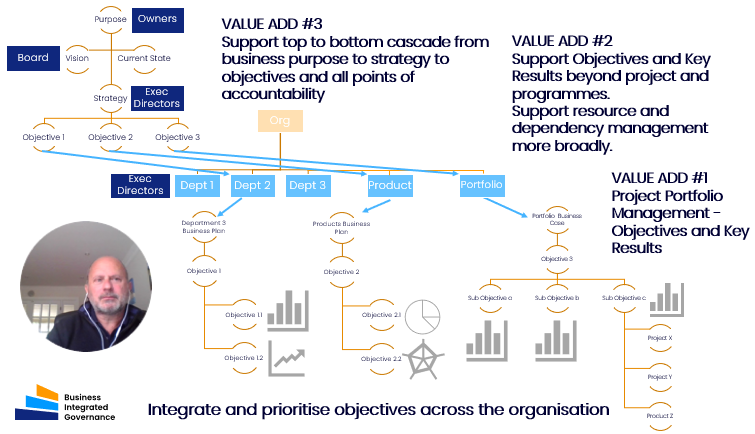
Questions Raised
Throughout the presentation, questions were raised - but due to time pressure - could not be answered. A summary of what was asked and the essence of answers that would have been given is summarised here:
• The difference between PMO and CPO: A PMO is a project management office that supports the delivery and governance of projects, while a CPO is a chief project officer that is a senior executive responsible for aligning projects, programs, and portfolios with the organization's goals and objectives. One will not replace the other.
• The importance of connecting project delivery to outcomes: Project delivery is not enough to create value for the organization, as it needs to be linked to the benefits and outcomes that the business units and customers perceive. The PMO can help to ensure that the project outputs are aligned with the business objectives and key results, and that the benefits are realized and exploited - but accountability lies with sponsors - not the PMO.
• The challenges and opportunities for PMOs to add value: PMOs often face the challenge of being seen as a cost centre, an admin unit, or a compliance function, rather than a value-adding entity. To overcome this, PMOs need to engage with the top managers and directors, and show how they can support the strategic decision making, resource allocation, and benefit realization of the organization.
• The difference between benefits and value: Benefits are the measurable improvements that projects and programs generate for the business, while value is the perception of the worth that customers have from the products or services. Benefits are not the same as value, as value may appear in a stream and depend on the customer's needs and expectations.
• The different aspects of governance: Governance is not just about compliance and reporting, but also about assurance and decision making. The PMO can support governance by providing insights, information, and recommendations to the sponsors and governance bodies, and by helping them to hold the project and program managers accountable for their performance and results.
•
The distinction between product creation and product exploitation: Product creation is the process of delivering the outputs of the projects and programs, while product exploitation is the process of using the outputs to achieve the benefits and outcomes. Both processes have costs, but only the latter has benefits. It is important to avoid breaking the chain between cost and benefit, and to ensure that the product exploitation is planned and executed effectively.
Conclusion and Authors Comments:
I think the general thrust / call to action was to give a sense of where a PMO could develop – beyond offering day to day services to those that focused on value across projects, alongside projects and above projects. We heard from one person that had a story to tell on tacking step 1 of that, an example of technology that enables the identification of value in projects for step 1, and a testimonial from someone who has deployed software, and achieved a change tacking step 1.
- Bottom up Message? - Talk to us if you want to upsell your PMO to support greater value from your projects as we have the vision, technology, change management capability and track record to make this work for you.
- Top down message? - The connection of strategy to delivery is complex, and only part of that delivery is change – but with the right development of your PMO, and the introduction of a solid information backbone – not only greater tactical value can be achieved, but greater focus on strategic priorities is possible. Talk to us to discuss what the journey might look like.
If you are interested in learning more about connecting strategy to your delivery, please contact us and find out how to start the journey to improve strategy delivery:
Enablers
- Clarity of Purpose(s)
- Strategic Process
- Integrated Governance Framework
- Information and Data Capability
- Business Support - to operate the Strategic Process and Integrated Governance
Technology
- Corporate RAID
- Document Library
- OKR Platform - Viva Goals
- Prioritisation tools
- Milestone Planning
- Resource Planning
- Finance Planning
RAID - Risk, Action, Issue and Decision
OKR - Objective and Key Results
Culture Change
- Current State Assessment - of current capability
- Periodic Review of Purpose, Business Drivers
- Enabled people
- Working Strategy Operating Model
- Adopted Strategy Information Model
- Operation of Integrated Governance
- Fair Accountability

